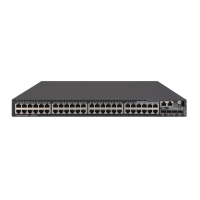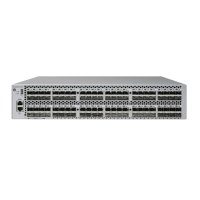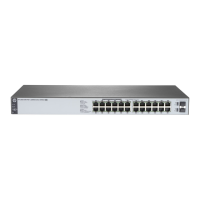3
Rule numbering step
If you do not assign an ID to the rule you are creating, the system automatically assigns it a rule ID.
The rule numbering step sets the increment by which the system automatically numbers rules. For
example, the default ACL rule numbering step is 5. If you do not assign IDs to rules you are creating,
they are automatically numbered 0, 5, 10, 15, and so on. The wider the numbering step, the more
rules you can insert between two rules.
By introducing a gap between rules rather than contiguously numbering rules, you have the flexibility
of inserting rules in an ACL. This feature is important for a config-order ACL, where ACL rules are
matched in ascending order of rule ID.
Automatic rule numbering and renumbering
The ID automatically assigned to an ACL rule takes the nearest higher multiple of the numbering step
to the current highest rule ID, starting with 0.
For example, if the numbering step is 5 (the default), and there are five ACL rules numbered 0, 5, 9,
10, and 12, the newly defined rule is numbered 15. If the ACL does not contain any rule, the first rule
is numbered 0.
Whenever the step changes, the rules are renumbered, starting from 0. For example, if there are five
rules numbered 5, 10, 13, 15, and 20, changing the step from 5 to 2 causes the rules to be
renumbered 0, 2, 4, 6, and 8.
Fragment filtering with ACLs
Traditional packet filtering matches only first fragments of packets, and allows all subsequent
non-first fragments to pass through. Attackers can fabricate non-first fragments to attack networks.
To avoid the risks, the HPE ACL implementation does the following:
• Filters all fragments by default, including non-first fragments.
• Allows for matching criteria modification for efficiency. For example, you can configure the ACL
to filter only non-first fragments.
Configuration task list
Tasks at a glance
(Required.) Perform at least one of the following tasks:
• Configuring a basic ACL
{ Configuring an IPv4 basic ACL
{ Configuring an IPv6 basic ACL
• Configuring an advanced ACL
{ Configuring an IPv4 advanced ACL
{ Configuring an IPv6 advanced ACL
• Configuring an Ethernet frame header ACL
(Optional.) Copying an ACL
(Optional.) Configuring packet filtering with ACLs
Configuring a basic ACL
This section describes procedures for configuring IPv4 and IPv6 basic ACLs.

